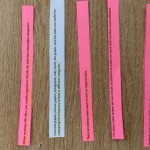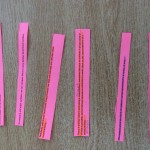Our team developed a resource of three-part problem-solving lessons and tasks that built students’ understanding of the big ideas in math and the connections between strands. We began by investigating the connections between the big ideas in Number Sense and Numeration to other strands of math to develop a deeper understanding of these concepts and connections for our personal instruction. From our exploration, we targeted a set of big ideas that mainly had cross-strand connections between Number Sense and Numeration, Measurement, and Data Management. We then developed a set of enriching and engaging tasks that are student-centred and focus on the exploration of the big ideas. We incorporated the three-part problem-solving model, and focused on questioning that highlighted the key learnings in our reflect and connect sessions, to engage student understanding, and to drive future instruction.
Team Members
Shanda Bogart
Thames Valley District School Board
Tracie Madill
Thames Valley District School Board
Kelli Wilcocks
Thames Valley District School Board
Christine Long
Thames Valley District School Board
Melinda Michielsen, William Nediger, Jennifer Cole
Thames Valley District School Board
Professional Learning Goals
Our group developed a deeper understanding of the “big ideas” in math in order to understand the mathematical concepts behind the curriculum expectations. We also discovered the numerous connections between these big ideas amongst the math strands and how we can base our instruction on these connections. Rather than focusing on one area of math at a time in our instruction, we are now planning our teaching around clusters of big ideas and taking a multi-strand approach to mathematics. We also learned how to use effective questions to draw upon students’ understanding of the big ideas in the Consolidation portion of the lesson.
Before we began the project, we noticed that our students struggled with multi-step and multi-strand problems. We were wondering if we used a multi-strand approach to our instruction, would students be more successful in these tasks? We have noticed improvements in student performance in these multi-strand tasks. During class discussions, students are making their own connections to other strands from the tasks previously taught.
Activities and Resources
We first determined a usable list of big ideas that we could work with from resources from Marian Small. We took these big ideas and put them into sentence strips and clustered them by ideas that connect and work well together. We then determined one cluster of big idea connections that we wanted to target and work with. In this case, it was a cluster that was mainly based on Number Sense and Numeration, Measurement, and Data Management. We then designed a set of tasks that targeted these big ideas as an area of study and tried them out in our classrooms. We met a few times to reflect and refine these lessons. Our final task was going back to the big ideas and clustering them together to see how we could create an effective long-range plan for our math programs that develops deeper math understanding in our students.
Unexpected Challenges
We wished we had started to use Google Drive sooner to track the lessons. As we tried the lessons, we had many variations which became difficult to keep track of the lessons, and changes that were made. Near the end of our project, we started to use the technology to keep track of our work and to communicate in-between our meetings. We also had planned on using PRIME as a pre-assessment and post-assessment tool to determine the success of our project. When we discussed our plans and which big ideas we were focussing on, we did not feel that the PRIME kit would be an accurate measurement of all of the math learning that took place. We also felt that with our time constraints, we would be limited with the PRIME assessment and it wouldn’t fully benefit our project at this time.
Enhancing Student Learning and Development
Students are noticing the connections between the strands of math and that real-world math usually doesn’t focus on just one area. They are realizing that when they are doing a measuring activity, they are not only comparing just the size of an object but also numbers. Rather than focusing on one strand of math for a few weeks that is isolated from the others, we are using a multi-strand approach that enables the students to realize the connections between the strands themselves. They are able to measure and make connections to other situations in math by using meaningful contexts that enables them to apply their learning to real-life situations rather than irrelevant contexts that are limited to classroom situations. As stated earlier, our students struggled with multi-step and multi-strand problems before this process, but now we can see through the tasks that we’ve developed that students are making these connections and are more capable of tackling multi-strand tasks.
Sharing
We have been fortunate within our schools to have ongoing dialogue about our project, as well as shared our tasks with our grade partners. Within our group, we also had our instructional coaches, who were involved with the project, share the tasks with the teachers they work with at their other buildings. The coaches are also preparing to share with their coaching colleagues in order to share with more teachers across our school board. The tasks are being shared through a Google Drive link via email, as well as ongoing professional development.
Project Evaluation
Absolutely! We certainly developed a stronger understanding of the big ideas for our own personal understanding and our students’. We noticed a deeper math understanding in our students through their work and certainly in their communication. The project has lead us to believe that this multi-strand approach to math instruction is impactful, so much so that we are now looking at how we can develop this approach into a long-range plan for our professional practices.
Resources Used
Small, Marian. (2012). Good Questions Great Ways to Differentiate Mathematics Instruction. Canada: Nelson.
Small, Marian. (2008). Big Ideas from Dr. Small Grades K-3. Canada: Nelson.
Ontario Mathematics Curriculum Document
Effective Guides to Number Sense and Numeration. Ministry of Education. Ontario.
Effective Guide to Measurement. Ministry of Education. Ontario.
Resources Created
These resources will open in your browser in a new tab, or be downloaded to your computer.














